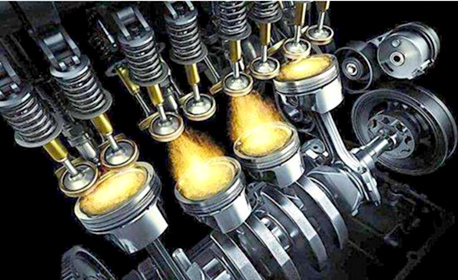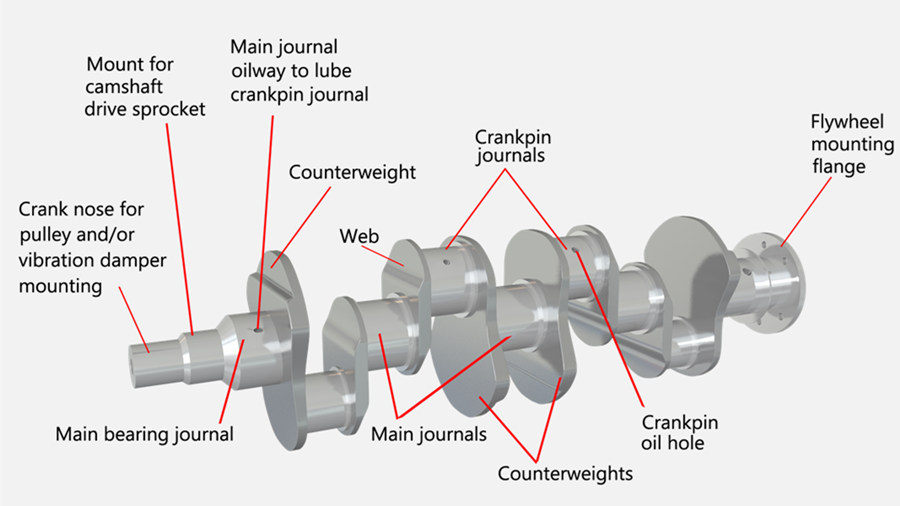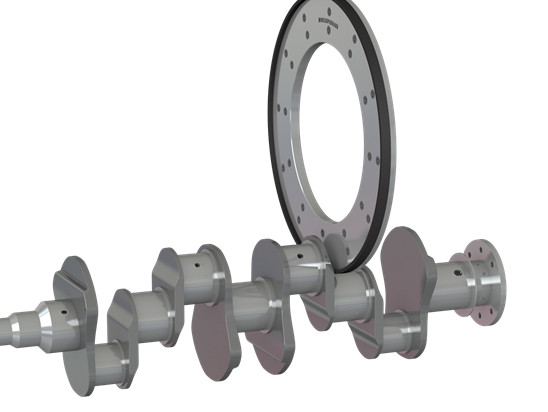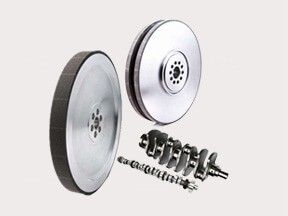Case of vitrified CBN grinding wheel for crankshaft grinding on Landis grinder
What is crankshaft?
The crankshaft is the main rotating part of the engine. After the connecting rod is installed, it can undertake the up and down (reciprocating) motion of the connecting rod into a circular (rotating) motion.
The crankshaft is an important part of the engine. Its material is made of carbon structural steel or ductile iron. There are two important parts: main journal, connecting rod journal (and others). The main journal is installed on the cylinder block, the connecting rod journal is connected with the large end hole of the connecting rod, and the small end hole of the connecting rod is connected with the cylinder piston, which is a typical slider crank mechanism.

How the crankshaft works:
The crankshaft is one of the most typical and important parts in the engine. Its function is to convert the gas pressure transmitted by the piston connecting rod into torque, output work as power, drive other working mechanisms, and drive the auxiliary equipment of the internal combustion engine to work. the
The grinding of the crankshaft journal is carried out on the basis of the crankshaft correction. In addition to meeting the technical requirements of the journal surface dimensional accuracy and surface roughness, the grinding of the crankshaft must also meet the requirements of shape and position tolerance: when grinding the crankshaft, the coaxiality of the axis lines of the main journal and the connecting rod journal must be guaranteed And the parallelism between the two shaft centerlines limits the crank radius error. And ensure the accuracy of the angle between the connecting rod journals. Grinding of crankshafts is usually carried out on special crankshaft grinding machines.
Grinding of connecting rod journal
Due to the uneven wear of the connecting rod journal, there are two grinding methods: eccentric grinding and concentric grinding.
The concentric grinding method is to keep the axis position of the connecting rod journal unchanged after grinding, that is, the crank radius and distribution angle remain unchanged. When grinding the crankshaft of a diesel engine, the concentric method is often used to keep the crank radius constant and the compression ratio of the diesel engine constant, but the amount of grinding each time is large. At present, during the life of the car, the number of overhauls is reduced, and the concentric method can ensure the same engine performance.
The eccentric grinding method is to position the grinding according to the worn connecting rod journal surface, at this time, the centerline position of the journal and the crank radius have changed. Generally, the crank radius after grinding is larger than the original crank radius, so that the compression ratio increases, and the changes of each cylinder are uneven, and at the same time, the mass center of the entire crankshaft is not on the centerline of the crankshaft main journal, which causes the crankshaft to be unbalanced, resulting in additional load during operation. Dynamic load. Therefore, when grinding the connecting rod journal, the increase of the crank radius should be reduced as much as possible to ensure that the coaxiality error of the axis line of the connecting rod journal in the same position is not greater than ±0.10mm, so as to ensure the balance of the crankshaft in operation.
Recently, Moresuperhard met a crankshaft customer, his requirements are as follows:
| Grinder | Landis LT2He |
| Workpiece | Crankshaft |
| Material | QT600 |
| Hardness | HRC 62-65 |
| Surface require | Ra0.4 |
| Grinding allowance | 1mm |
Any requirement about crankshaft and camshaft grinding, welcome to inquiry our sales Mr. Alan (alan.wang@moresuperhard.com).
–EDITOR: Doris Hu, Alan Wang
–POST: Doris Hu









